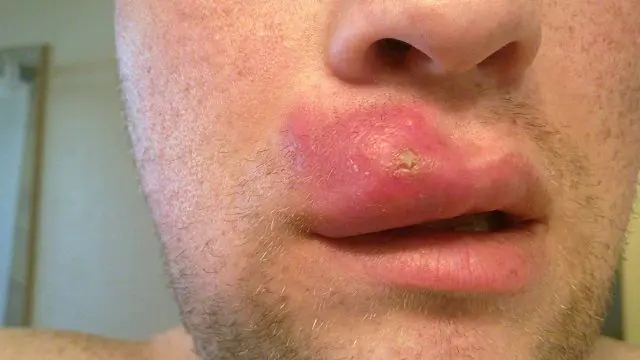- Ointments
- How to relieve swelling with folk remedies
Very often, after opening an abscess, especially if the boil is located on the face, quite severe swelling appears. It is difficult to say exactly how long it takes for the swelling to go away after opening the boil, since in each case the disease occurs individually.
Ointments against swelling of the face after removal of a boil
After any type of intervention, a slight swelling always appears around the edges of the wound. It will not be possible to avoid it, because this is a normal reaction of the body to tissue dissection. In most cases, swelling after the opening of the boil goes away on its own within a few days, if there is no infection in the wound.
That is why, after removing the core of the boil, treatment continues - the wound must be washed with a large amount of hydrogen peroxide, chlorhexidine or a simple saline solution (1 teaspoon of salt dissolves in one glass of water).
- Read what to do if the core of the boil does not come out.
Over time, the swelling after removal of the boil begins to gradually decrease, soreness and redness of the skin disappears. This process can be accelerated by keeping the wound opening sterile to prevent re-infection. Such simple procedures help accelerate the formation of healthy tissue.
If severe swelling of the face appears after opening the boil, a lump may remain, Vishnevsky ointment, ichthyol, Bepanten or Panthenol is applied around the wound opening. These remedies quickly and effectively relieve all inflammatory phenomena that may bother you after removal of suppuration. As a result, swelling is relieved and wound healing is accelerated.
How to relieve swelling after opening a boil using folk remedies?
To relieve swelling, you can use simple but very effective traditional medicine. The most effective is simple aloe, which is found in almost every home. This plant has anti-inflammatory, analgesic and antibacterial properties. It is advisable to use leaves of a plant that is no more than two years old:
- cut off the bottom leaf, wash, cut lengthwise and apply the pulp to the inflammation, secure with a bandage;
- take the bottom leaf of the plant, peel it, grind the pulp to obtain a paste, apply to the problem area and secure with a bandage, change the bandage every 3-4 hours;
- Mix aloe juice with olive oil (the components are taken in equal quantities), soak gauze in the resulting mixture and apply to the inflammation, change the bandage twice a day.
To quickly remove the swelling, it is recommended to wash the wound with a decoction of chamomile or calendula. This procedure should be carried out several times a day, using only fresh and filtered herbal decoction. Remember to change sterile dressings to prevent re-infection of the wound.
Video on what to do after removing a boil:
[media=https://youtu.be/6qRU5fiwrO4]
- Read what to do if the core does not come out of the boil



